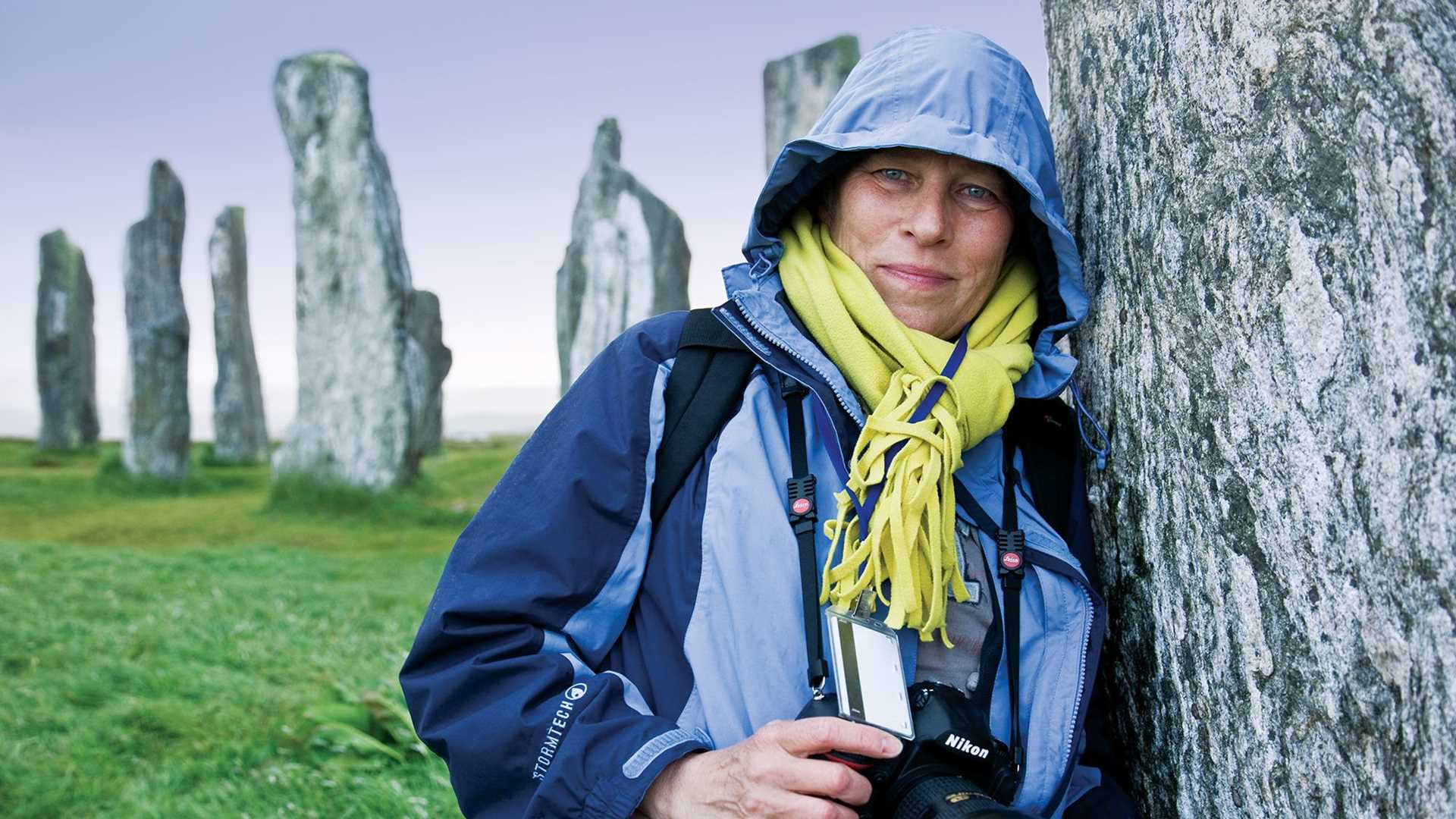What is your favorite Lindblad Expeditions destination?
To narrow it to one is impossible; how about three!
I love snow and ice. In that environment, when the weather is rough, the magnificent beauty of the blue ice is unmatchable. So, the expeditions to Svalbard, the North Atlantic, and the Arctic are truly breathtaking.
I live in Glasgow, and you would think I would want to go much farther afield, but the British Isles expeditions are incredible—dramatic and beautiful landscapes, culture, history, wonderful people, and rich birdlife. An amazing experience.
Finally, the trip to the Sea of Cortez on the Mexican Baja Peninsula holds memories that will last a lifetime. The landscapes are absolutely gorgeous, but what sticks with me is the wildlife. I was on one of the pangas (boats) on a whale watching trip when we came across a pod of female gray whales and their calves. I was so busy taking pictures that I hadn’t fully realized that the whales had come right up to the skiff. It wasn’t until someone standing next to me said, “Put down your camera for a minute and touch the whale!” I was reluctant at first, but I did reach my hand out to touch the calf that was right next to us. It was like no other moment I have experienced in my life. I am not usually emotionally overwhelmed, but this was certainly an exception. To have such a close encounter with such an intelligent and spiritual creature moved me to tears. I felt an incredible sense of trust and forgiveness with this animal, and it is a memory I will treasure always.
Name your female hero(es) and why.
The four adventurous women who inspired me as a child and young adult.
In the geography classroom as a child in Denmark, we read The Red Geography Book, written by a female geographer, Sofie Petersen, famous for being quite a character who had traveled around the world by herself on a motorcycle. I thought she had such a fascinating persona, and traveling anywhere was such an attraction in my little universe at the time. I still talk about her to guests on the expeditions because she was the one who first opened my eyes to a world of wonder.
The second is the Danish anthropologist Heddy Hansen. I read about Hansen’s adventures in the Middle East during the 1930s or 40s where she spent a year inside a harem. She opened the door to a world I otherwise knew nothing about.
The third was photographer, Inga Aistrup. Inga’s nickname was “Bulder”, which means “thunder,” and she certainly lived up to it as she was a force: the first female press photographer in Denmark. She introduced me to photography, let me use her cameras and darkroom, and mentored me. She was the first person to tell me that I should - and could - be a photographer. I had never thought that could be an option for me. Although I knew of many photographers, including many from National Geographic, I never imagined it could be my world. Bulder demystified this for me. She told me about her adventures living in Brazil when she was young, and this rekindled my imagination and dream to go to faraway places and explore. A defining moment was when Bulder and I photographed performing artists at the Royal Theatre in Copenhagen. I was 17 years old, and being on that stage with the performers that I admired so much, doing what I loved, I recognized that I was growing up, and that this was the future that I wanted for myself.
The fourth woman is Jane Goodall. I remember picking up a book by a young woman who went to Africa to live with and study chimpanzees, and I was amazed. I read about her relation to National Geographic, and this focused my mind, and I knew I wanted to work as a photographer for the magazine.
What advice would you give the next generation of women explorers?
Find a mentor that can open up your world, guide you on your next steps and help you grow in your explorations. To add to this, it is important to make sure that this mentor is also your ambassador, opening doors for you, and putting your name forward for opportunities. As women it is a lot more difficult to get our foot in the door, so we need to support one another as best we can.
What would people be surprised to know about you?
That I am two different personalities: one in the field, and another one when I am at home. When I am on assignment in the field I am paying attention, open to all of the opportunities the experience has to offer, and ready to take the leap or follow the lead. When I get home I need to recuperate! I am much more introverted at home, and tend to use the time to hibernate a bit in order to catch my breath for the next adventure!




